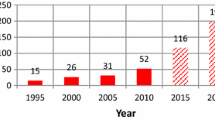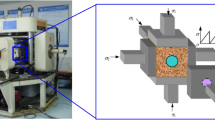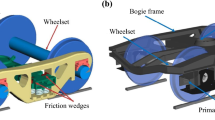Summary
The Furka railway tunnel, with a length of 15.4 km, a maximum overburden of 1520 m and the portals lying at 1500 m above sea level, presented some special problems both in the design and construction stages, which required novel solutions. The cross section of this single track tunnel varied from 26 to 42 m2. It is remarkable that the permanent support only consists of rock anchors and a shotcrete lining. In sections with high rock pressures it was necessary to excavate an elliptical or circular profile using steel ribs in addition to anchors and the shotcrete. All support measures were closely adapted to the geotechnical conditions encountered. As a basis for decisions, besides geological and rock mechanics investigations and construction experience, the results of systematic deformation measurements were used.
To make the rock in the vicinity of the opening impermeable a newly developed two component polyurethene grout was applied, to the author's knowledge the first time in a traffic tunnel. The grouting also improved substantially the strength of the jointed rock.
Similar content being viewed by others
References
Amberg, R., Hertelendy, A. (1983): New Methods of Measuring Technique in Underground Openings. Proc. Int. Symp. on Field Measurements in Geomechanics, Zurich, Balkema Publishers.
Amberg, R., Sala, A. (1984): Shotcrete as Permanent Lining for the Furka Base Tunnel. Rock Mechanics and Rock Engineering, Vol. 17 (in print).
Hagedorn, H. (1983): Synthetic Resin Grouted Tube Anchors. Rock Mechanics and Rock Engineering, Vol. 16 (no. 2), 143–149.
John, M. (1976): Die Geotechnischen Messungen im Arlbergtunnel und deren Auswirkungen auf das Baugeschehen. Rock Mechanics, Suppl. 5, 157–177.
Keller, F., Schneider, T. R. (1982): Geologie und Geotechnik, Der Furka-Basistunnel. Schweiz. Ingenieur und Architekt 24.
Kovári, K., Amstad, Ch., Grob, H. (1974): Messung von Verschiebungen und Deformationen an Bauwerken mit dem Distometer-ISETH. Schweiz. Bauzeitung, 29. Jg., H. 36.
Meyer, F. (1981): Reaktive Kunstharze im Brergbau, Glückauf 117 (no. 14).
Author information
Authors and Affiliations
Rights and permissions
About this article
Cite this article
Amberg, R. Design and construction of the Furka base tunnel. Rock Mech Rock Engng 16, 215–231 (1983). https://doi.org/10.1007/BF01042358
Issue Date:
DOI: https://doi.org/10.1007/BF01042358




